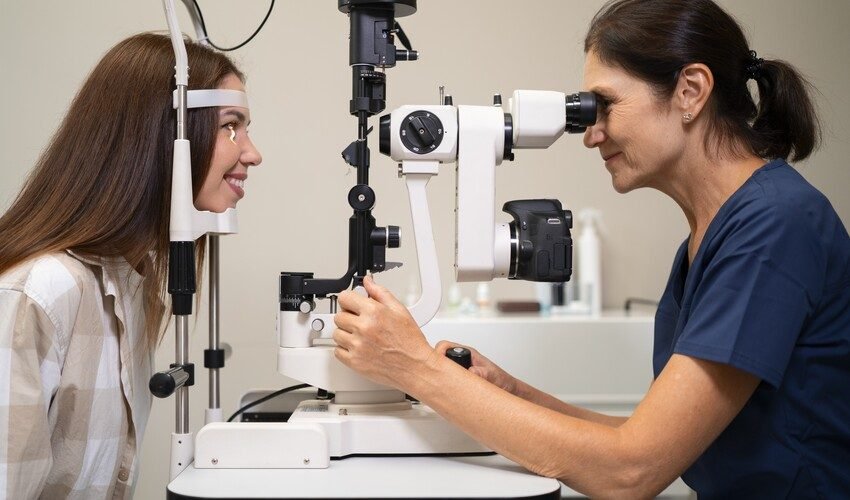Advances in medical technology are reshaping the way cosmetic and reconstructive procedures are performed. Precision instruments, enhanced imaging systems, and AI-assisted planning are now giving surgeons once-unimaginable tools.
In facial surgery, for instance, techniques have become more refined and less invasive, offering faster recovery times and more predictable results. Another example of innovation is the introduction of ultrasonic rhinoplasty.
As stated in a Glamour article, issues like a dorsal hump or an inappropriate nose shape can impact a person’s confidence. Even a fairly confident individual can be bothered by it. Ultrasonic rhinoplasty uses sound waves to reshape nasal structures with remarkable accuracy.
According to Shah Aesthetic Surgery, it is the latest and most advanced procedure for nasal bone reshaping and hump removal. It is an FDA-approved, minimally traumatic process that ensures precise and beautiful results.
In this article, we will look at several such emerging tech-driven trends in cosmetic and reconstructive procedures.
#1: AI-Enhanced Surgical Planning
Artificial intelligence is no longer just a diagnostic tool; it’s becoming an integral part of surgical preparation and decision-making.
AI algorithms can process patient imaging data to create highly detailed, three-dimensional models of the target area. This allows surgeons to test multiple surgical scenarios virtually, identifying the one with the best balance between safety, function, and aesthetics.
The technology can also analyze thousands of past cases, spotting patterns and suggesting improvements that even experienced surgeons might overlook.
A comprehensive review published on the NCBI website found that AI now plays a transformative role throughout the plastic surgery journey. It helps with various aspects ranging from preoperative imaging analysis and anatomical mapping to surgical planning and postoperative outcome prediction.
Additionally, it enables the precise segmentation of bones and soft tissues on scans and the generation of detailed, patient-specific 3D models. These capabilities enable more efficient and safer surgical planning, allowing for the simulation of multiple procedural scenarios to achieve optimal outcomes.
Can AI help identify potential surgical risks before a procedure?
Yes. AI can analyze patient data, including medical history and imaging, to flag risk factors that might not be obvious during manual review. This can range from detecting anatomical irregularities to predicting how a patient might respond to anesthesia, allowing surgeons to prepare accordingly and reduce complications.
#2: Robotics and Precision Instruments
Robotic assistance is another driving force in cosmetic and reconstructive surgery. These robots offer a level of precision that surpasses even the steadiest human hands.
They can execute minute, controlled movements with consistent accuracy, which is especially valuable in surgeries that demand symmetry or delicate tissue handling. For example, in complex reconstructive cases involving facial trauma, robotics can help rebuild structures while minimizing harm to surrounding areas.
Combined with advanced microsurgical instruments, these tools reduce surgeon fatigue, enable longer and more complex operations, and ultimately improve patient outcomes. Unfortunately, an Australasian Journal of Plastic Surgery study states that the lack of adequate microsurgical instrumentation is one of the biggest limitations.
However, the study also notes that there are many areas where robotic surgery has already become mainstream. The most beneficial areas for using robots are the head and neck. Transoral surgeries and microvascular procedures are the most common procedures conducted with their use. Robotic devices have also demonstrated safe, precise alternatives for breast reconstruction.
Are robotic-assisted surgeries faster than traditional manual procedures?
Not necessarily. While robotics can improve precision, the setup and calibration process can be time-consuming. The main advantage lies in accuracy and reduced tissue trauma rather than speed. Over time, as surgeons become more skilled with robotic systems, procedure times often improve without sacrificing quality.
#3: The Role of Advanced Imaging Technologies
High-definition 3D imaging and intraoperative navigation systems are revolutionizing surgical accuracy. Surgeons can now visualize internal structures in real time, adjusting their approach instantly to achieve the best possible symmetry and proportion.
In cosmetic surgery, this means more predictable results and fewer revisions. In reconstructive work, such as repairing birth defects or trauma injuries, advanced imaging is essential for restoring function while preserving natural appearance.
Consider the example of reconstructive surgeries for complex limb fractures. According to a study from the International Journal of Research in Orthopaedics, 3D imaging techniques improve diagnosis accuracy by up to 32%. Moreover, it also improves postoperative alignment in 94% of the cases.
According to Future Market Insights, the global 3D imaging market is worth around $162.4 million in 2025. However, it is estimated to grow at a CAGR of 6.26% from 2025 to 2035 to reach $296.4 million. This indicates its ongoing integration and expansion into mainstream surgical practice.
How is augmented reality used with advanced imaging in surgery?
Augmented reality can overlay 3D anatomical models onto the surgical site in real time, allowing surgeons to “see” beneath the skin without large incisions. This technology helps with orientation, precision, and planning, reducing the risk of errors during complex cosmetic or reconstructive operations.
#4: Wearable Tech in Post-Surgical Recovery
Post-surgical care is being transformed by wearable devices that track recovery metrics around the clock. Modern wearables can monitor swelling, temperature, blood oxygen levels, and more. These are parameters that can indicate how well the body is healing.
As noted in a ScienceDirect study, AI-integrated wearable sensors detected postoperative sepsis 2–4 hours earlier. This led to a 30% reduction in ICU transfers for surgical patients. Predictive analytics allowed for early intervention, improved outcomes, and demonstrated the benefit of combining real-time data capture with clinical decision support.
This real-time feedback allows surgeons to respond quickly to any complications, often before patients even notice symptoms. For patients, it means greater peace of mind and a more connected relationship with their care team.
Some devices also provide recovery reminders, guiding patients on medication schedules, activity limits, and follow-up appointments. This ensures that the benefits of advanced surgical techniques are fully realized.
The coming years are likely to see even more integration between digital technologies and surgical expertise. Machine learning models will continue to refine predictive outcomes, while bioengineered materials may play a bigger role in both cosmetic and reconstructive work.
As these advancements converge, patients can expect safer, more efficient, and more personalized results. It will solidify the role of technology as both a creative and practical partner in the art of transformation.
Read Dive is a leading technology blog focusing on different domains like Blockchain, AI, Chatbot, Fintech, Health Tech, Software Development and Testing. For guest blogging, please feel free to contact at readdive@gmail.com.





